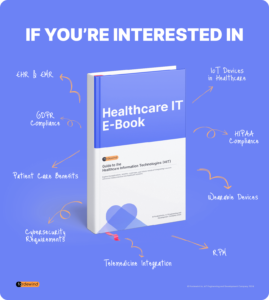What is Remote Patient Monitoring?
Remote Patient Monitoring (RPM) is an emerging field of healthcare that is enabled by the Internet of Things (IoT). It is a technology-driven approach that allows healthcare providers to monitor patients’ health status in real-time, without requiring the patient to be physically present in the clinic or hospital.
RPM uses connected devices, such as wearables, sensors, and mobile apps, to collect and transmit data about a patient’s health to healthcare providers. The data is transmitted securely over the internet, and healthcare providers can use it to track a patient’s health status and make informed decisions about their care.
How does Remote Patient Monitoring Work?
RPM works by using connected devices to collect data about a patient’s health, such as heart rate, blood pressure, blood sugar levels, and oxygen saturation. The data is transmitted securely over the internet to healthcare providers, who can monitor it in real-time using specialized software.
Patients can use a variety of devices to collect and transmit data, including wearable devices, such as smartwatches, fitness trackers, and health monitors, as well as home medical devices, such as blood glucose monitors and blood pressure monitors. Some devices are also equipped with sensors that can detect changes in a patient’s health status and alert healthcare providers to potential issues.
Remote Patient Monitoring has some benefits and challenges. Speaking about the advantages, it should be noted that RPM allows healthcare providers to monitor a patient’s health status in real-time, making it easier to detect potential health problems early and intervene before they become serious.
Besides it, RPM can reduce healthcare costs by reducing the number of hospital admissions and emergency department visits, as well as by improving the efficiency of healthcare delivery.
Moreover, RPM allows patients to receive care in the comfort of their own homes, which can improve their satisfaction with their healthcare experience.
In addition, RPM can improve the management of chronic diseases, such as diabetes and hypertension, by providing healthcare providers with real-time data about a patient’s health status.
While RPM has many potential benefits, there are also some challenges to its implementation, including security concerns, technological limitations, and patient compliance.
RPM involves the transmission of sensitive patient data over the internet, which can raise security concerns. Healthcare providers need to ensure that patient data is transmitted securely and that patient privacy is protected.
RPM is dependent on technology, and there are limitations to the accuracy and reliability of the devices used to collect and transmit data. Healthcare providers need to carefully evaluate the technology used in RPM to ensure that it is reliable and accurate.
RPM requires patients to actively participate in their care by using connected devices to collect and transmit data. Some patients may not be comfortable using technology, or may not have access to the necessary devices.
In conclusion, Remote Patient Monitoring is an emerging field of healthcare that has the potential to transform the way healthcare is delivered. By using connected devices to monitor patients’ health in real-time, healthcare providers can improve patient outcomes, reduce healthcare costs, and improve patient satisfaction. While there are some challenges to the implementation of RPM, the potential benefits make it an area of healthcare that is worth exploring further.
Fordewind.io is an IoT engineering and development company based in Kyiv, Ukraine. Our main areas of interest and expertise are the automotive industry and Smart Home/City projects. Contact us right now without a doubt and learn more about how we can help you build the future.
